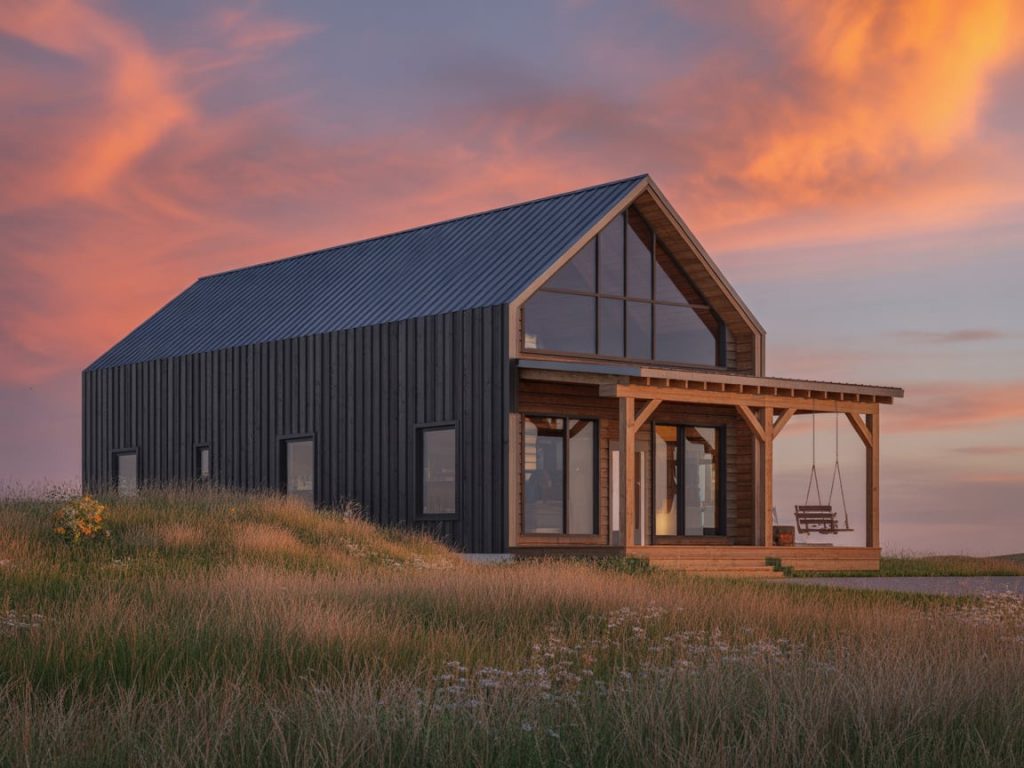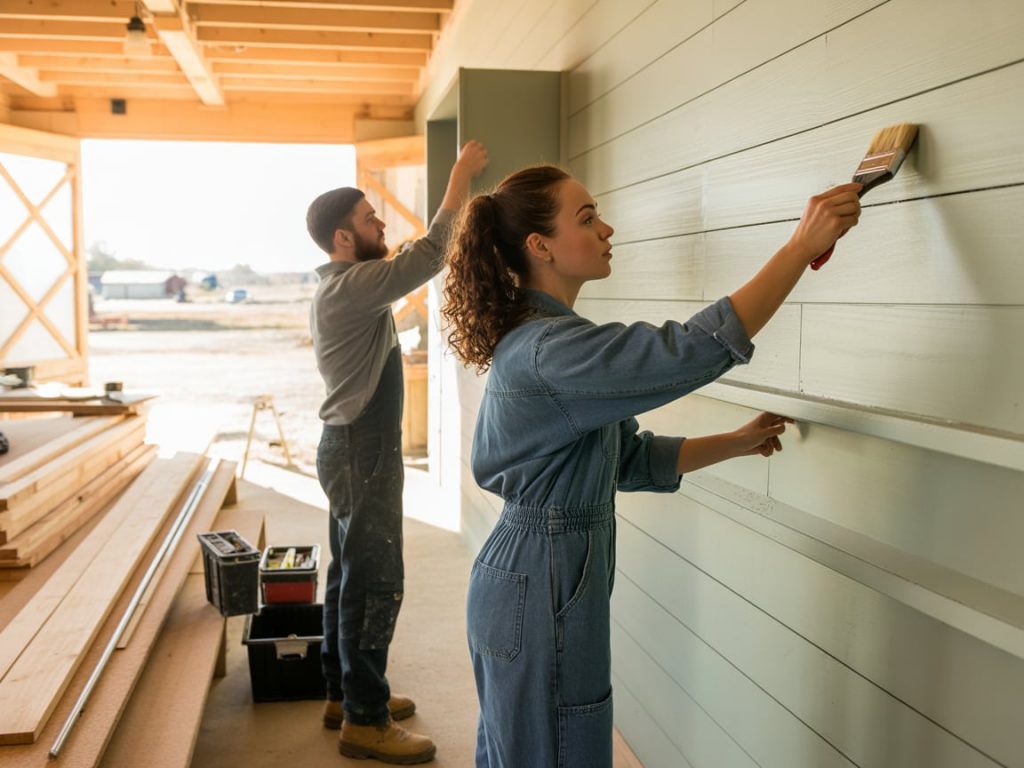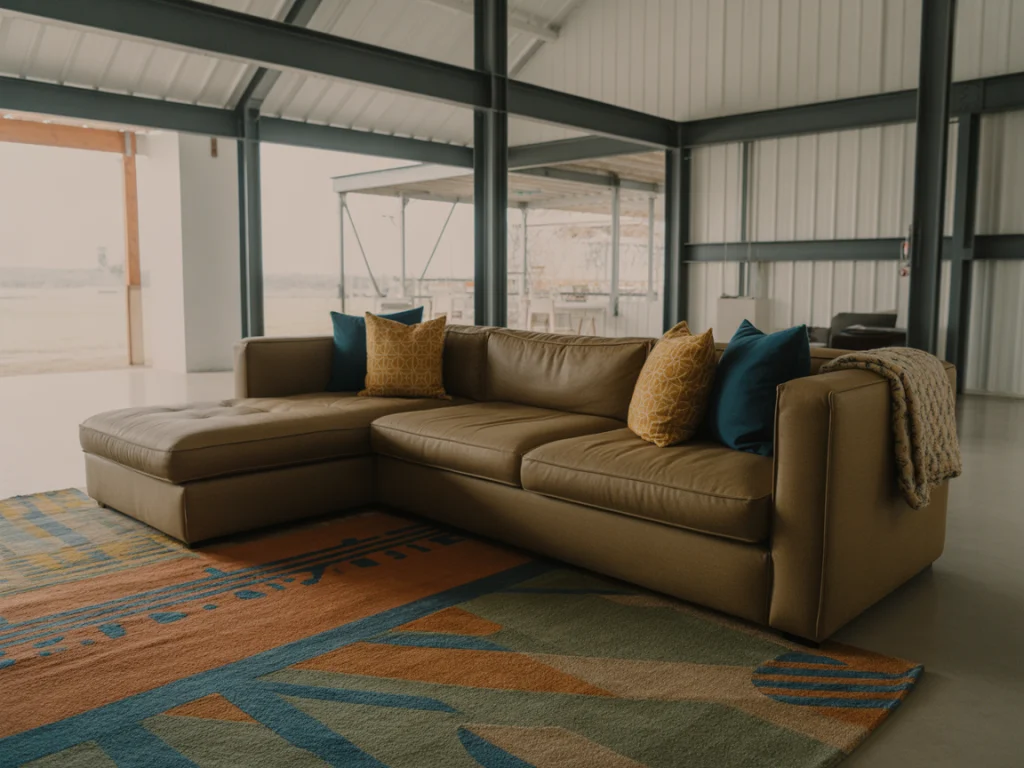Alright, my friend, have you ever scrolled through social media and stopped dead in your tracks at a picture of a stunning home that looks like a modern barn? The high ceilings, the wide-open spaces, the rustic-meets-industrial vibe? Yep, you’ve just discovered the magic of the barndominium. But then you think, “I could never afford that.” Well, I’m here to tell you that the dream of a barndominium doesn’t have to break the bank. We’re about to dive deep into the world of barndominiums on a budget, exploring every trick, tip, and strategy to turn that stylish, affordable dream home into your new reality.
Why a Barndominium? It’s More Than Just a Trendy Barn!
You might be wondering why barndominiums have become so popular. It’s not just a passing trend; they offer some seriously compelling advantages over traditional homes.
- Cost-Effectiveness: This is the big one. Barndominiums often come with a lower per-square-foot building cost than traditional stick-built homes. We’ll get into the specifics, but building an affordable barndominium is absolutely possible.
- Speed of Construction: Because they use a metal shell or a post-frame structure, the exterior of a barndo can go up incredibly fast. This saves you time and labor costs.
- Durability and Low Maintenance: The metal siding is tough as nails, resistant to rot, termites, and fire. This makes for a durable, long-lasting home with less exterior upkeep.
- Open-Concept Living: The design allows for massive, open-concept living spaces with soaring ceilings. Perfect for someone who loves to entertain or just hates walls, IMO.
Barndominiums are a smart solution for anyone looking for a unique, durable, and cost-effective home.

Understanding Barndominium Cost: Breaking Down the Numbers
Let’s get real about the money, because that’s the whole point of building barndominiums on a budget. The total barndominium cost can vary wildly, but by understanding the key factors, you can take control of your spending.
Per-Square-Foot Cost: What’s the Real Number?
When you hear people talk about building costs, they usually use a per-square-foot number. For barndos, this can range from $30 to $150+ per square foot. Why such a huge range?
- Bare-Bones Shell: If you’re only paying for the metal shell to be erected on a foundation, the cost can be as low as $30-$40 per square foot. This is where the savings truly begin for a DIY barndominium.
- Turnkey Finish: A “turnkey” barndominium (where a builder does everything for you) will cost closer to $100-$150 per square foot, which is still often less than a traditional home.
- The “Luxury” Barndo: If you’re adding high-end finishes, custom cabinetry, and a fancy kitchen, the sky’s the limit. A luxury barndo can easily cost as much as a traditional custom home.
The biggest factor is you. The more work you’re willing to do yourself, the lower your final barndominium cost will be.
The Cheapest Way to Build: It’s All About the Plan
The cheapest way to build a barndominium isn’t about cutting corners; it’s about being strategic. Here’s how to keep your costs down:
- Simplify Your Floor Plan: Complex layouts cost more. A simple, rectangular shape with an open-concept design is the most cost-effective.
- Do Your Own Labor: Your time is your greatest asset on a budget build. We’ll get into this more, but managing your own labor or doing the work yourself can save you tens of thousands of dollars.
- Use Affordable Finishes: There are amazing, high-quality, budget-friendly materials out there. We’ll talk about those later.
- Size Matters: The larger the square footage, the higher the cost, obviously. Be realistic about the size you need.
The Core Components: Where You Can Save Big
Your barndominium is made of a few key parts, and each one presents a huge opportunity for savings.
DIY Barndominium: Sweat Equity is Your Best Friend
Building a DIY barndominium is the single best way to save money. Even if you’re not a professional builder, you can handle many of the tasks yourself.
- Managing Contractors: You can act as your own general contractor, managing the subcontractors (plumbers, electricians, roofers). You’ll have to put in the time, but you save the contractor’s fee.
- Finishing the Interior: This is where you can save the most! Hanging drywall, installing insulation, painting, and laying floors are all tasks you can learn from YouTube and tackle yourself.
- DIY Barndominium is not for the faint of heart, but it’s incredibly rewarding. You will finish knowing every inch of your home.

The Barndominium Kit: A Strategic Shortcut?
For those who want a blend of DIY and guidance, a barndominium kit might be the answer. A kit typically includes the metal frame, siding, and roofing, all pre-cut and ready to be assembled.
- Pros:
- Saves you from sourcing all the raw materials.
- Provides a detailed plan for construction.
- Helps you get the shell up quickly and correctly.
- Cons:
- Less customization. You’re building from a pre-designed plan.
- The barndominium kit prices can still be a significant investment, often ranging from $20,000 to $100,000+.
A cheap barndominium kit is a great way to start, but the real savings come in the finishing work.
Pole Barn Homes vs. Metal Building Homes
You’ll hear these terms thrown around a lot. What’s the difference, and which one is better for barndominiums on a budget?
- Pole Barn Homes (Post-Frame): These use large poles buried in the ground or attached to a concrete slab as the primary vertical support. They are often cheaper and easier to build a basic shell, making them a fantastic choice for affordable barndominiums.
- Metal Building Homes (Steel Frame): These use a steel frame (like a giant erector set) that bolts together. They are more durable, offer wider clear-span interiors, and are generally more expensive for the base kit.
For a true budget build, a pole barn home is often the more cost-effective option.
10 Smart Strategies for Barndominiums on a Budget
Ready for some real-world tips? Here’s how I would tackle a budget-friendly barndo build today.
- Be Your Own GC: I said it before, and I’ll say it again. This is the single biggest way to save money on a barndominium construction. You’ll manage the project, but you won’t have to pay a general contractor’s 10-20% fee.
- Go with a Simple Rectangular Footprint: A square or rectangle is the most efficient and cheapest shape to build. Every angle and bump-out adds to the barndominium cost.
- Use a Barndominium Kit: For a fast, predictable build, a kit can be a smart move, especially for the exterior. Just make sure to compare barndominium kit prices from multiple vendors.
- Embrace Open-Concept: Fewer interior walls mean less framing, less drywall, and less labor. It also makes your home feel bigger!
- Focus on Energy Efficiency: Spend money where it counts. High-quality insulation (like spray foam) will save you money on utility bills for years to come.
- Shop for Used/Discount Materials: Check local salvage yards, Craigslist, and Habitat for Humanity ReStores for doors, windows, light fixtures, and other materials. A lot of great stuff is out there for a fraction of the cost.
- Choose Polished Concrete Floors: This is a budget-friendly showstopper. You can stain or polish the concrete slab for a modern, industrial look that costs far less than wood or tile.
- DIY the Interior Finish: If you’re a hands-on person, tackle the insulation, drywall, painting, and flooring yourself. This is where you get to build your own barndo in the most impactful way.
- Keep Bathrooms & Kitchens Simple: Plumbing and electrical are expensive. Keep your plumbing runs short by placing bathrooms and the kitchen close to each other.
- Use Low-Cost Siding & Roofing: A metal roof and siding are already cost-effective. You can save even more by using standard colors and styles instead of custom finishes.
Interior Finishing on a Dime: Making it Look Expensive (Without the Price Tag)
The interior of your barndo is where it becomes a home. You can make it look like a million bucks without spending it.
- Kitchen & Bath: Use open shelving instead of upper cabinets. Look for stock cabinetry from a big-box store. Use butcher block countertops, which are cheap and look fantastic. For tile, choose classic subway tile or a simple porcelain tile for a timeless, affordable look.
- Flooring: As mentioned, a polished concrete slab is a fantastic, durable, and low-cost option. You can also use luxury vinyl plank flooring (LVP) throughout your entire home. It’s waterproof, tough, and looks just like wood.
- Walls: Embrace the metal! You can leave some of the metal interior exposed for that industrial look. For drywall, consider doing a texture and then painting for a high-end look without the huge cost of intricate finishes.

Barndominium Floor Plans for Budget-Friendly Living
Your floor plan is one of the biggest drivers of barndominium cost. A smart design can save you money and make your home more functional.
- Simple & Open: A simple, rectangular plan with an open great room is the most efficient. This reduces the number of walls you have to frame and drywall.
- Loft Spaces: A loft area can be a cost-effective way to add square footage without building an entirely new level. It’s great for an office, a spare bedroom, or a media room.
- Plumbing Pods: A great strategy is to keep all your plumbing (kitchen, bathrooms, laundry) close together in a “pod” or along one wall. This significantly reduces the cost of plumbing runs.
- Living and Shop Space: Many barndominium floor plans include both a living area and a large workshop or garage area. This is a smart way to maximize your land and building for multiple purposes.
The Honest Truth: The Pros and Cons of a Budget Barndominium
Building an affordable barndominium is a journey with its own set of highs and lows. It’s not for everyone, and it’s important to be realistic.
- Pros: Lower cost, fast construction, durable materials, energy efficiency, and a unique, custom home. You get a lot of bang for your buck.
- Cons: Zoning challenges (some areas don’t allow them), potential for a “tin can” feeling if not insulated properly, and it can be difficult to get a loan if a bank doesn’t have much experience with barndos.
A budget barndominium is a fantastic option for the right person. If you’re willing to be hands-on and smart with your choices, you can achieve your dream home.
FAQs about Barndominiums on a Budget
What is the cheapest way to build a barndominium?
The cheapest way to build a barndominium is to act as your own general contractor and do as much of the interior finishing work as you can yourself. Choosing a simple, rectangular floor plan and using cost-effective materials like polished concrete floors and stock cabinets will also help keep costs down.
How much does a barndominium cost to build?
The cost to build a barndominium varies widely, ranging from $30 to $150+ per square foot. A shell can be as low as $30-$40 per square foot, while a fully finished “turnkey” home typically costs over $100 per square foot, which is still often less than traditional homes.
Can you build a barndominium for $100,000?
Yes, it is possible to build a barndominium for $100,000, but it will likely be a small-to-moderate-sized home with a high degree of DIY effort. You would likely need to purchase a barndominium kit and do much of the interior framing, insulation, and finishing work yourself.
What is the best size for a barndominium?
The best size for a barndominium is subjective, but for an affordable barndominium, a great starting point is between 1,200 and 2,000 square feet. This size allows for comfortable living space without the massive increase in cost that comes with larger builds.
How do you finish the interior of a barndominium cheap?
To finish the interior of a barndominium cheaply, you can leave some metal walls exposed, use polished concrete or luxury vinyl plank (LVP) for flooring, and install open shelving in the kitchen. DIYing the drywall and painting is another huge cost saver.
Are barndominiums cheaper than houses?
Yes, barndominiums are often cheaper to build than traditional stick-built houses. The simplified construction of the metal shell and the open-concept design can reduce labor and material costs, making a barndominium on a budget a much more attainable goal.
What is the downside of a barndominium?
The downsides of a barndominium can include potential difficulty securing a mortgage from a traditional lender, more limited design options if you use a pre-made kit, and a more industrial aesthetic that may not appeal to everyone.
Final Thoughts: Your Barndo Dream is Closer Than You Think!
So there you have it, future barndominium owner! Building your dream home on a budget is absolutely possible. By understanding the costs, getting your hands dirty with some DIY barndominium work, and making smart choices from the floor plan to the finishes, you can achieve a unique, affordable, and beautiful home that you’ll love for years to come. It’s time to start planning your new life in a barndo! You’ve got this. 😉